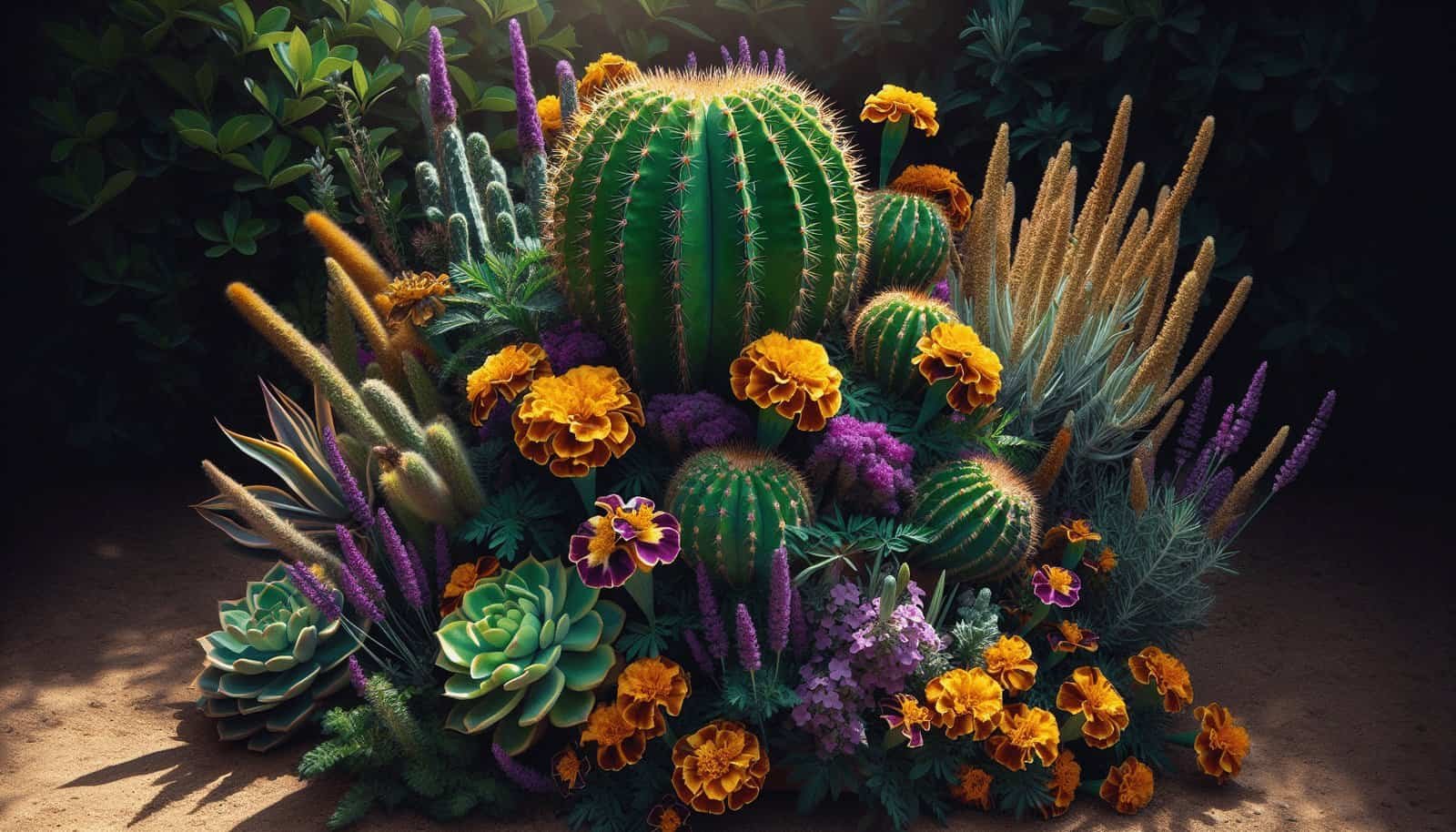Have you ever wondered how to create the perfect environment for your nopal cactus to thrive? One of the most effective approaches is companion planting, a technique that involves growing different plants together to enhance each other’s growth or to protect each other from pests. It’s a method widely used in gardening and agriculture to promote biodiversity, enrich the soil, and boost plant health.
In this article, we’ll explore the best companion plants for the nopal cactus, also known as prickly pear (Opuntia spp.). Nopal cacti are renowned for their unique appearance and resilience, making them popular choices for both ornamental gardens and edible landscapes. However, they can benefit significantly from the right companions in their vicinity.

Understanding Nopal Cactus Needs
Before diving into companion planting, it’s crucial to understand the basic requirements of nopal cactus. These plants are native to arid and semi-arid regions, so they thrive in conditions with plenty of sunlight, well-drained soil, and minimal water. Familiarizing yourself with these needs will help you choose the most suitable companion plants.
Climate and Sunlight Requirements
Nopal cacti prefer a warm climate with plenty of sunlight. They grow best in USDA Hardiness Zones 8 through 11, where temperatures don’t frequently dip below freezing. When choosing companion plants, it’s essential to select those with similar sunlight and temperature tolerances to ensure harmonious growth.
Soil and Watering Needs
Nopal cacti require well-draining soil, as they are susceptible to root rot if left in waterlogged conditions. Sandy or rocky soils are ideal. Additionally, nopal cacti are drought-tolerant, meaning they need less water than many other plants. Companion plants should ideally be xerophytes—plants that require minimal water—to prevent overwatering issues.
Benefits of Companion Planting with Nopal Cactus
Companion planting not only involves practical benefits, such as improved plant health and soil conditions, but it also enhances the aesthetic value of your garden. Let’s break down these advantages further.
Pest Control
Certain plants can help deter pests that might otherwise attack your nopal cactus. For instance, aromatic herbs such as rosemary and oregano can repel insects, which helps reduce the need for chemical pesticides.
Soil Improvement
Leguminous plants like beans or peas can improve soil health by fixing nitrogen, making it more available for nopal cacti and other neighboring plants. This natural enrichment reduces the need for synthetic fertilizers and helps maintain balanced soil nutrients.
Biodiversity Enhancement
Increasing the variety of plants around your nopal cactus creates a more biodiverse ecosystem. This can attract beneficial insects, such as pollinators and predators of common pests, thus promoting a healthier garden environment.

Best Companion Plants for Nopal Cactus
Now, let’s look at specific plants that pair well with nopal cactus. These companion plants have been selected based on their compatibility with the growing conditions and needs of nopal cacti.
Aromatic Herbs
Aromatic herbs serve as excellent companions to repel pests, and they complement the low-water needs of nopal cacti.
- Rosemary (Rosmarinus officinalis): Known for its drought resistance, rosemary can thrive alongside nopal cacti and help deter harmful insects with its strong scent.
- Oregano (Origanum vulgare): With its ability to attract pollinators and repel pests, oregano is both a functional and flavorful addition to your garden.
Legumes
Legumes can enhance soil fertility, making them beneficial companions for nopal cacti.
- Beans (Phaseolus spp.): Beans, especially the bush varieties, can fix nitrogen in the soil. They also require similar sunlight conditions as nopal cactus.
- Peas (Pisum sativum): Peas are another nitrogen-fixing plant, and they grow well in cool weather, providing a seasonal balance to your garden.
Flowering Plants
Choosing flowering plants that thrive in similar conditions can create a colorful and inviting garden space.
- California Poppy (Eschscholzia californica): This colorful wildflower adds visual interest and draws pollinators, which benefits both the poppy and the cactus.
- Marigold (Tagetes spp.): Known for pest-repelling properties, marigolds also bring vibrant color to your garden.
Succulents
Given that nopal cacti are succulents, other succulents with similar needs make great companions.
- Agave (Agave spp.): Like nopal cactus, agave requires minimal water and thrives in sunny locales. Their contrasting shapes and sizes can add visual intrigue.
- Sedum (Sedum spp.): With its low-growing habit and wide array of forms, sedum can beautifully complement nopal cactus in gardens or container arrangements.
Grasses
Ornamental grasses can add height and texture to your garden layout.
- Blue Fescue (Festuca glauca): This decorative grass offers a unique blue hue and thrives in dry, sunny conditions, similar to nopal cactus.
- Feather Grass (Stipa tenuissima): Known for its graceful, flowing form, feather grass works well in xeriscape gardens with nopal cactus.

Designing Your Nopal Cactus Garden
Designing a garden using companion plants involves considering visual appeal as well as plant health. Here are some tips to create a balanced and thriving garden space.
Layering with Heights and Textures
Utilize varying plant heights and textures to design a visually dynamic garden. For instance, place taller plants like agave in the background, medium-sized nopal cactus centrally, and lower plants like sedum in the foreground.
Color Coordination
Choosing plants with complementary or contrasting colors can highlight your nopal cactus. For example, the blue-green shades of blue fescue can enhance the deep green of the cactus, while vibrant marigolds provide a bright contrast.
Planting Arrangement
A creative arrangement not only optimizes space but also enhances companion planting benefits. Ensure there’s adequate spacing between plants to promote healthy growth and air circulation, which helps prevent disease.

Potential Challenges in Companion Planting
While companion planting offers numerous benefits, it’s not without challenges. Here are some potential issues and how to address them.
Competition for Resources
Plants that are mismatched in their water, sunlight, or nutrient needs can compete rather than support each other. Be mindful of plant characteristics to ensure they complement rather than compete.
Disease Spread
Close planting can sometimes increase the risk of disease transmission. To prevent this, remove any dead or diseased plants promptly and choose disease-resistant varieties where possible.
Pest Attraction
While companion plants can deter certain pests, they may inadvertently attract others. Regular monitoring and integrated pest management strategies can help you manage pest populations effectively.

Conclusion
Choosing the best companion plants for nopal cactus involves understanding the cactus’s specific needs and selecting plants that can thrive in similar environments. By incorporating aromatic herbs, legumes, flowering plants, succulents, and grasses, you can develop a thriving and visually appealing garden. Not only does this practice enhance plant health and biodiversity, but it also creates a more engaging space for you to enjoy. With a bit of planning and creativity, your nopal cactus garden can be both functional and beautiful.

